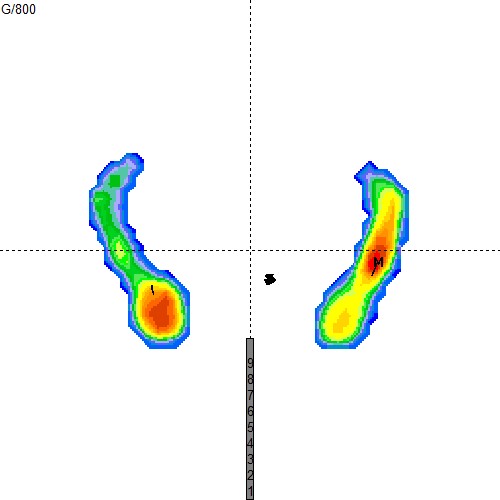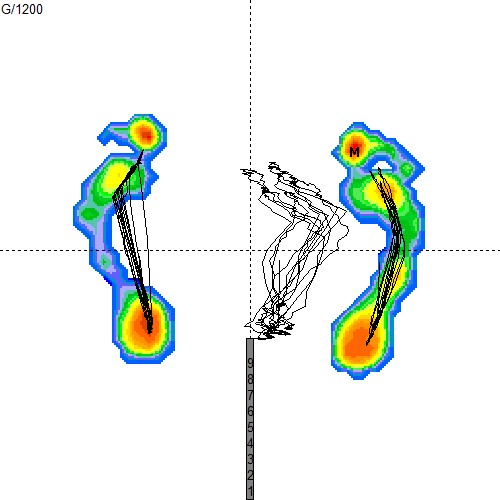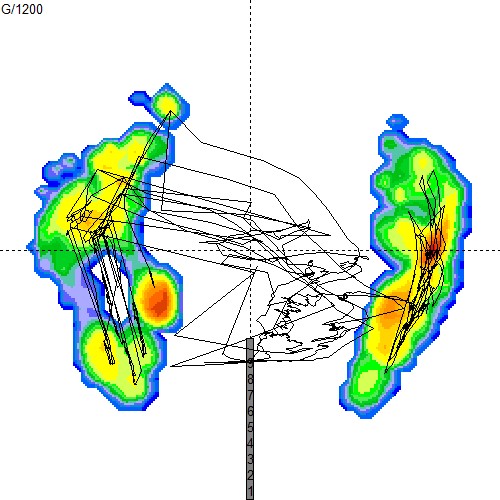Functional Baropodometric Study in Planning Rehabilitative Measures for a Female Athlete with Knee Joint Lesions
Karmazin VV*, Andreev DА, Tohtieva NV, Parastaev SA
Federal Scientific and Clinical Centre for Sports Medicine and Rehabilitation, Federal Medical and Biological
Agency, Russia.
Department of Sports Medicine of the Pediatric Faculty of the Pirogov Russian National Research Medical University, Russia.
Received Date: 22/11/2021; Published Date: 20/12/2021
*Corresponding author: Valerii V Karmazin, doctor of sports medicine, PhD, Federal Scientific and Clinical Centre for Sports Medicine and Rehabilitation, Federal Medical and Biological Agency, Russia.
Abstract
The article provides an example of the diagnostic significance of the baropodometric examination in planning rehabilitation measures in an athlete with knee joint damage. The presented results demonstrate pronounced postural disorders that were diagnosed before the onset of pain syndrome. After analyzing the results of the baropodometric study, rehabilitation tasks were set and a rehabilitation program was formed taking into account the correction of all identified disorders.
Keywords: Postural balance; Baropodometry; Static and dynamic tests; Proprioceptive system; Postural and movement disorders; Rehabilitative program
Introduction
Functional asymmetries of the musculoskeletal system are widely represented in athletes from various sports. They are characterized both by a different state of the tonus of the particular muscle groups and by persistent changes in a postural stereotype and a movement pattern. These changes are caused both by intense loads characteristic of the sport of records and by adaptive and compensatory processes in the mechanisms of the regulation of posture and movements in general and in particular ligamentous-muscular segments. We assign the leading role in the formation of these functional changes to mutations in the proprioceptive sphere. With an optimal ratio of the state of motor control and significant stereotypical physical loads characteristic of a particular sport, adaptive and compensatory processes develop in the interactions of the particular groups of muscles and the elements of the regulatory processes of the motor sphere. However, in the cases of various functional disorders in the interaction of contralateral muscle groups and antagonistic muscles and/or under excessive physical exertion on certain parts of the musculoskeletal system persistent functional motor disorders appear characterizing maladaptive and decompensatory changes in an athlete's motor sphere. These functional disorders can be persistent and result in the development of diseases of the musculoskeletal system and increase the risk of injury to overworked muscles, ligaments or joints in athletes.
Based on the above, in rehabilitation of athletes with diseases of the musculoskeletal system relieving symptoms and manifestations of the underlying disease is accompanied with a primary diagnostics and stagewise monitoring of the state of the proprioceptive system and motor skills, which makes it possible to notice various proprioceptive and motor changes in different parts of the musculoskeletal system of athletes serving as a background and often becoming a prerequisite for the progress of the main identified disease or for an increased risk of traumatization of certain motor segments.
We consider baropodometry to be one of the most important and relevant methods of detecting proprioceptive and movement disorders in the pathology of the lower extremities in athletes. In this study, we carry out both static and various motor tests, which reveals the severity of functional disorders characteristic of the underlying disease as well as clinically latent motor disorders. The results of static and dynamic baropodometry provide an urgent assessment of the presence and degree of functional postural and movement disorders, which is necessary for an optimization of rehabilitative program and serves as a defining moment for the starting point and dynamics of the effectiveness of rehabilitative measures.
Case Report
We shall consider an example of the diagnostic significance of baropodometry in the rehabilitation of a female volleyball player with knee joint lesions. Five months ago, the athlete developed pains in her left knee joint and two months ago she developed pains in her right knee joint. The diagnosis of a traumatologist was an injury to the medial meniscus of the left extremity and patellar tendinitis of the right extremity.
During examination tenderness is revealed on palpation in the area of both knee joints: to leftward along the medial surface of the knee joint in the projection of the joint space, to rightward in the area of the patellar tendon. The strength of the musculus quadriceps femoris is sufficient on both sides. The strength of the hamstring group is slightly reduced on both sides (more reduced on the right side). Severe insufficiency of the gluteal muscles in stabilizing the pelvis while standing is detected in the right lower extremity.
The static and dynamic types of baropodometry were performed afterwards.
Figure 1: The static test.

Figure 1 represents a static test. The test results reveal combined flat feet, more pronounced in the right lower extremity. The significant displacement of the General Center of Pressure (GCP) rightwards, increased area of the GCP and rate of the statokinesiogram are shown.
The baropodometric survey conducted three years ago is shown below. At that moment the pain did not make itself felt.

Figure 2: The static test conducted three years ago.
While comparing we observe the similar picture of the distribution of the load, however the athlete did not complain of the pain or other symptoms during the examination conducted three years ago.
The second test is a dynamic one with sagittal oscillations of the body (Figure 3).

Figure 3: The sagittal test
Figure 3 shows the displacement of the General Pressure Vector (GPV) rightwards; moreover, the vector is deformed with repeated local right-sided displacement during sagittal oscillations.
The third test is of dynamic nature with frontal oscillations of the body (Figure 4).

Figure 4: The frontal test.
The results of the frontal test lead to the conclusion about an increase in the load in the area of the longitudinal arch of both feet, more pronounced on the right side.
The fourth test – Toe-standing test.

Figure 5: Toe-standing test.
While standing on tiptoes a shift rightwards with an unstable GCP is also detected.
The fifth test is a jumping one. The series of five jumps is performed in 30 seconds with short breaks.




Figure 6d: The total result of the jumping test.
A stagewise assessment of the jumping test reveals the following:
A) the starting position of GPV is significantly shifted to the right.
B) The jump-off function is carried out by the front part of the left foot.
C) The landing is characterized by multiple oscillations, but it mostly concentrates at the area of the right foot.
D) The total result of the jumping test displays the similarity of GPV directions during all jumps.
Discussion
The total data of clinical examination and baropodometry led to the following rehabilitation tasks:
- The restoration of a painless range of motion in the knee joints in isometric and slow dynamic modes with the elements of concentric and eccentric modes of activity of the thigh muscles on both sides.
- Strengthening and stimulating the activity of the gluteal muscles with an emphasis on the right side using exercises in the prone and standing positions (balance exercises on unstable platforms as well) including single-leg ones with the control of pelvic stabilization and instrumental stimulation of the right gluteal muscles.
- Strengthening the muscles supporting the arch of the foot in various modes with the activation of the muscle activity of the flexors of the toes and posterior tibial muscle. The emphasis is on the right side.
Conclusion
The results of our baropodometric examination demonstrate significant postural disorders in the athlete, which developed long before the onset of clinical symptoms of knee joint lesions. In addition, it should be noted that for three years there has been no significant dynamics according to the results of the static test. The baropodometric static and dynamic tests in the case of the female athlete under examination enabled us to set specific rehabilitation tasks and served as a starting point for a gradual assessment of the effectiveness of rehabilitative measures.
Author Contributions - No
Competing Interests – No
Grant Information – No

